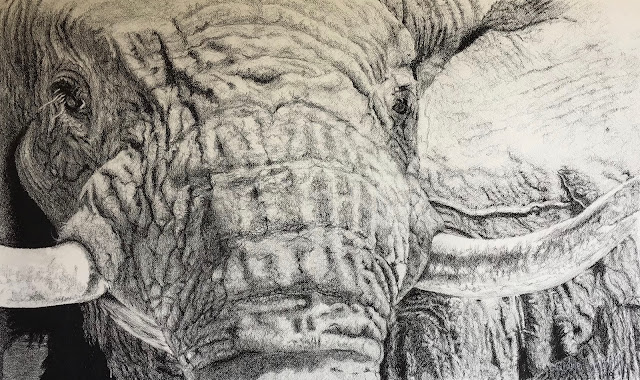Voortrekker - Legend of the Ugab
Voortrekker the pioneer elephant is no more. His footsteps now only an echo along the paths he once trod, his footprints have been devoured by the angry winds that whip their way along the Ugab River bed. Only his ghost still inhabits those sandy banks, the rumbles and the crack of breaking branches are now a whisper in the wind. His memory lives on only in the minds of those who loved him.
Africa has given birth to many legends through the millennia, legends that are fireside stories that leave one wide-eyed and in awe of the deep knowledge entrenched in the valleys and plains and across the rolling hills.
The answers to our questions can only be answered when we learn to listen. Questions like, how did Voortrekker know the way back to the Ugab? Where does the courage come from for an elephant to venture back into a dangerous place, a place he knew to leave in order to survive? What is the driving force behind him going back to where he had just come from and how did he communicate to the herds that he knew that the place they had fled was once more a safe place to go to?
We can only know the facts. The fact that some twenty odd years ago Voortrekker appeared on the banks of the Ugab River, then he disappeared again and when he finally returned he brought with him herds of desert elephants, and then they stayed.
Now, they face a new danger. And once again, it is conflict with the people who have moved into their space. Occupying their lands and depending on the same resources to survive. Water is so very precious in a landscape where it is only buried deep below the soil and man has worked out how to bring it out of the ground so that uninhabitable places have now become habitable and the animals that know how to survive with very little water and know how to search it out are a threat to those new interlopers.
Now, in order to survive these gentle giants have had to learn a new skill. They have to depend on people for their existence and they have to find a way to learn that the water buried in the sand is theirs while the water in the reservoirs is not. Now there is a new danger for them, for the people who have the water in the reservoirs also have guns and sticks and stones and they defend their water source so that they too don't die.
Either way, there is no easy solution to this problem and it takes not only patience but diplomacy and tolerance from all concerned to come up with workable solutions that will satisfy everyone.
Borehole protections are the only workable solution to date. Making the borehole water inaccessible to a six ton animal is no easy task. One advantage for the borehole owner is that the desert elephant has very "soft" feet and the pads cannot take the pressure exerted by rocks. This way, a walled defence around the borehole and a skirt of sharp rocks around the area is deterrent enough to keep both the borehole and its equipment safe from curious and thirsty elephants and the elephants do not learn to raid the water sources but to rely on their own entrenched knowledge to excavate the river beds for water.
EHRA Namibia has been building these defences as fast as the funds they can gather allow them to. And thus, the artwork seen in the video above is about to be used in order to raise more funds to protect the elephants of Damaraland.
An auction of a Limited Edition of the image will take place in June and the target is to raise enough funds for two borehole defences. We hope you will join us in this quest to help the herd that Voortrekker left behind live their days in peace along the banks of the Ugab River.
To join in the auction go to: ART for Voortrekker and LIKE the page.



Comments